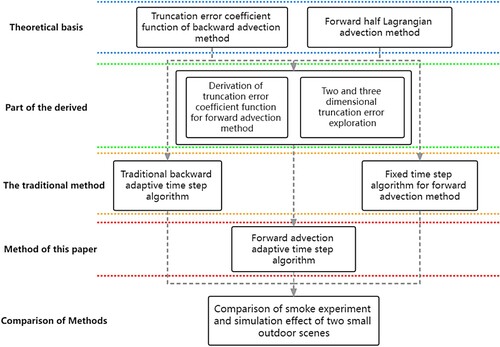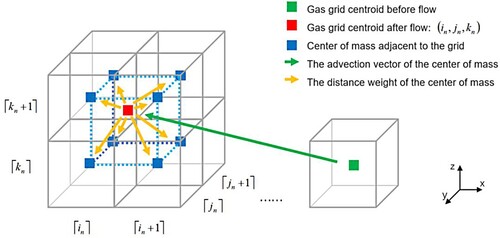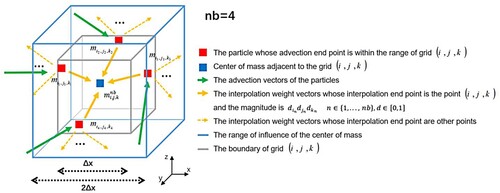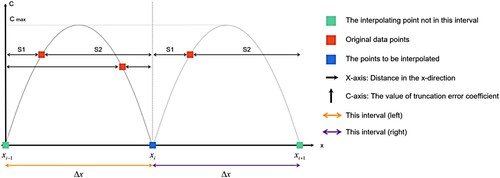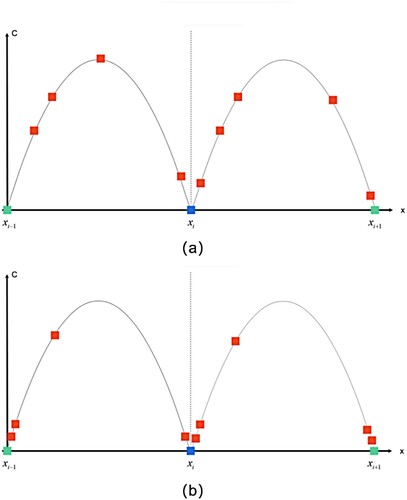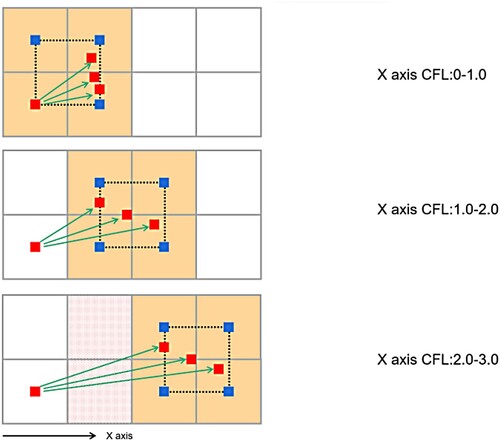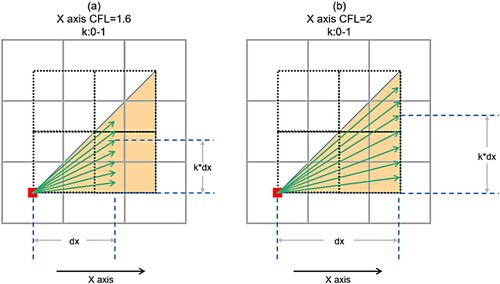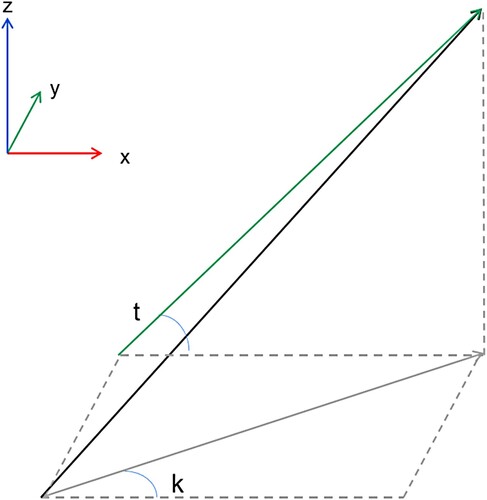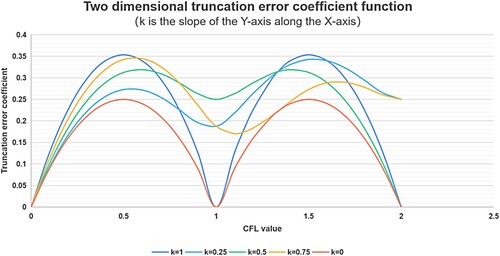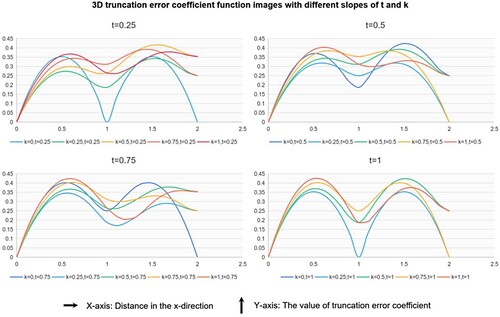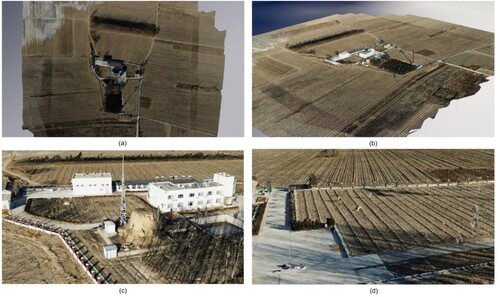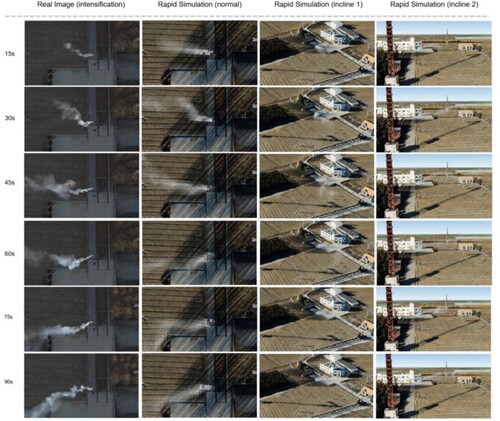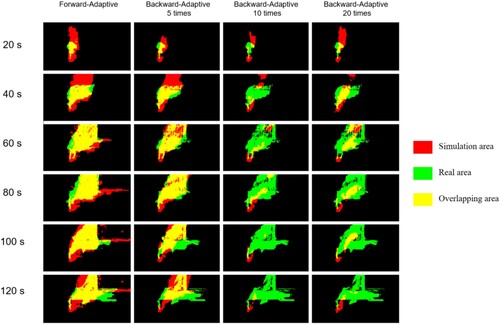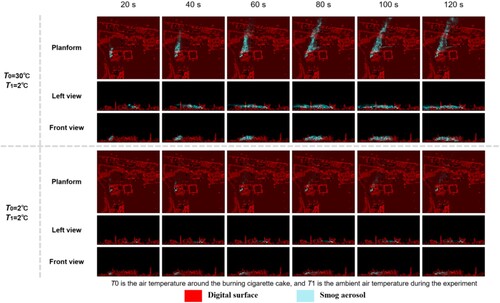Figures & data
Figure 6. Comparison test of mass conservation between traditional semi-Lagrangian method and forward method under closed condition.

Figure 7. Quality errors of the traditional semi-Lagrangian and forward methods under closed conditions.
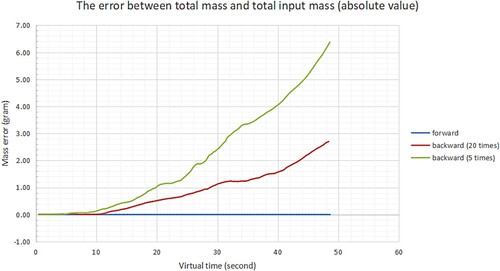
Table 1. Comparison of input quality and output quality of the forward method under closed condition.
Figure 8. Schematic diagram of first-order backward and forward interpolation. Red points are original value points, and blue points are to be interpolated. and
are the centre points of the neighbourhood grid. (a) Backward interpolation. (b) Forward interpolation.
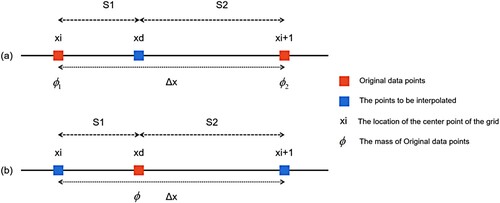
Figure 9. First-order one-dimensional backward tracking truncation error coefficient function image.
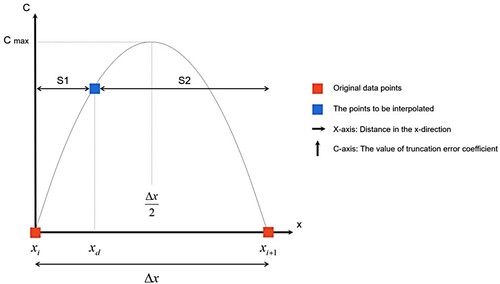
Table 2. Evaluation criteria of Kappa index.
Figure 22. Adaptive time step change image. (a) simple terrain experiment; (b) complex terrain experiment.
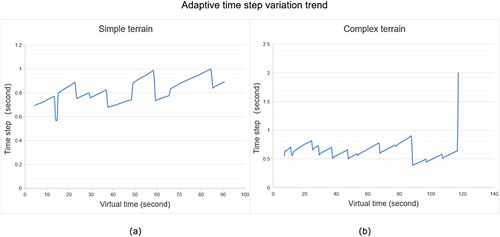
Figure 23. Comparison of intersection between simple terrain forward adaptive step size and fixed time step size methods.
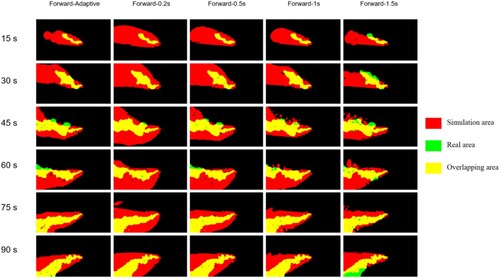
Figure 24. Comparison of the intersection of forward adaptive step size and fixed time step size methods for complex terrain.
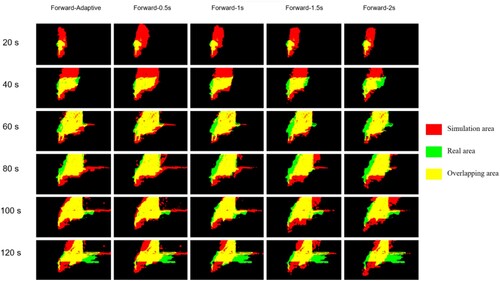
Table 3. Average Kappa values of forward adaptive step size and fixed time step size in simple and complex terrain experiments.
Figure 25. Comparison of the intersection of forward and backward adaptive step sizes in simple terrain experiment.
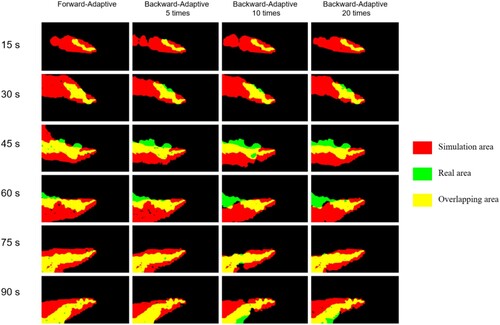
Figure 27. Time trend calculation of forward and backward adaptive steps for two terrain experiments.
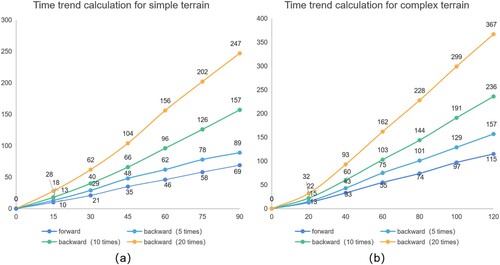
Table 4. Average Kappa values of forward and backward adaptive step sizes in two terrain experiments.
Figure 28. Three-dimensional motion visualisation of smoke aerosol in simple terrain under two temperature differences.


